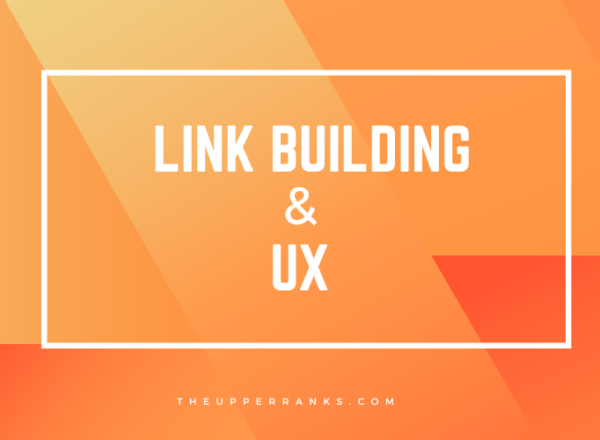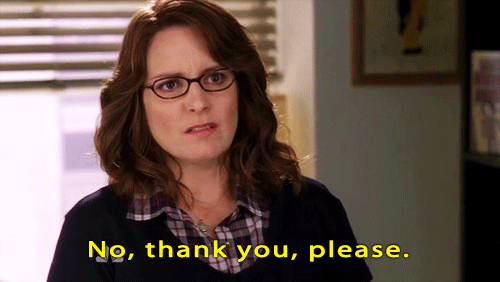So, you’re getting the hang of this whole link building thing.
You have several links under your belt, and you’re getting more responses to your outreach emails. You’re finding relevant target sites and not overusing the same anchor text over and over again. But If you want to step up your game even more, consider the intersection of user experience and link building.
In a roundup I conducted a few years ago, a number of link building experts weighed in on how to rank “boring” pages, which are difficult to build links to.
There’s more than one way to tackle every link building problem.
But even if you’re trying to rank a product or category page with a direct link, you still don’t want to mislead users.
I’ve seen my fair share of backlinks with misleading anchor texts, or links that take you to unhelpful, promotional pages. As a web user, clicking on a link and finding yourself somewhere totally unexpected is one of the worst experiences you can have.
It leads you to distrust the linking domain and loathe the destination domain. You’ll think twice the next time you click on a link.
If you focus on user experience, you’ll be building sustainable links– and building trust with users. To build a truly great link, you have to look at every aspect of the link from the user’s perspective.
This is true even if you’re building links to a product or category page.
Now, let’s talk about why user-friendly links are the future of SEO and link building.
Google Cares About User Experience
Google is always on the minds of SEOs and link builders and it’s important for us to realize how serious Google is taking UX into consideration when ranking pages.
Part of Google’s philosophy has always been focused on delivering the best user experience. With recent technological advances, Google and other search engines are now better placed than ever to deliver this vision. This focus will only intensify over the coming months and years.
Yet for many teams and agencies, UX has not consistently been a part of the SEO toolkit. Whether or not an SEO practitioner can discuss UX or make meaningful UX recommendations very much depends on personal experience, background and professional development programs.
UX is often the last thing on the minds of link builders. We’re busy thinking about search engine visibility, linkable assets, and how to improve our outreach efforts.
But even when we’re not considering UX, Google definitely is.
Google’s goal with the SERPs is to serve up the best possible search results for any given query.
Since Allstate ranks number one for ‘car insurance,’ you’d best bet their website is user-friendly and that you’ll land on a helpful page when you click the link from the SERPs.
Car insurance is a highly competitive field, so it makes sense that Google factors UX into its ranking algorithms, along with content, links, and a few other factors.
In that regard, I don’t believe a low quality, thin content, non-navigable page with 100,000 links could ever outrank Allstate– at least not in the long term.
Google doesn’t want to lose its seat as the world’s number one search engine, so they’re dedicated to serving up good search results. Good search results mean good webpages– webpages the user can easily navigate on desktop and mobile, while finding the information they need.
Quality, relevant links will help catapult your website into better search engine visibility but, going forward, I really don’t think you’ll be able to compete if you’re not thinking about how the user will feel when he reaches the other end of the link.
Bad UX and Link Building
Bad UX is all around us.
In the name of better search rankings, there are those that will do almost anything, as long as it doesn’t technically violate Google’s link schemes guidelines.
This makes for a much worse user experience and, quite honestly, pollutes the web.
There are a number of red flags when it comes to links and the user:
- Links that take you to unhelpful ‘money’ pages, such as product or category pages.
- Links that take you to websites that are impossible to navigate.
- Links that take you to tabbed content, in which the information they sought is hidden within a tab.
- Links that take you to infinite scroll pages, in which multiple subtopics reside on a single URL, with no method to land the consumer on the section relevant to their search.
Let’s take the infinite scroll example first.
Say you built a link to your tax software website with the anchor text “tax exemptions for single parents.” The link leads to the “tax preparation” category on your blog, which is an infinite scroll page.
You want a link to that category on your blog so you can rank higher for either “tax preparation” or “tax exemptions for single parents”.
But when the user has to scroll down four or five pages before they find anything related to tax exemptions for single parents, they’re going to give up and close the tab before they find the information they need.
They’re going to feel far less trusting of both you and the site who hosted you link, and they’re going to run right into your competitor’s arms.
If you’re using the anchor text “tax exemptions for single parents,” you’d better be pointing that link to a page that clearly explains what these tax exemptions are, without sending the user on a fishing expedition.
Let’s look at another example. Say you got someone to link to one of your product pages. They use the anchor text “I recently bought this organic cat food,” and it links to one of your product pages for said cat food.
But when the user lands on your page from their iPhone, it’s a garbled mess.
Images are broken, and they have to zoom in and scroll around to find the ‘buy now’ button. The font is too small for them to read about the cat food itself, and the checkout process is counter-intuitive. That’s because you never tested your product page for mobile devices.
If a user has difficulty, you can rest assured Google will notice.
Google doesn’t like ranking pages that don’t serve mobile users– so how much good did that link actually help you, in the end? Not very much.
How SEO and UX Can Work Together
Now that you’re thinking about why your links need to lead someplace useful, and how your links should function from a user’s perspective, let’s dig a little bit deeper.
Some of the goals of modern SEO are:
- Driving high-quality traffic from search engines
- Helping [Google, SEOs, and marketers to] understand what searchers are seeking
- Identifying missed opportunities to influence searchers
- Positively impacting brand reputations in search
- Creating long-term value with minimal risk
Here are the goals of modern UX:
- Helping users accomplish their tasks easily and enjoyably
- Helping organizations with their user-influencing goals
- Positively impacting access and reach for every potential user
- Improving desirability, credibility, findability, and usability
- Uncovering potential needs and fulfilling them
Google’s ranking inputs increase, rather than compete with, UX priorities. Those inputs include site accessibility, content relevance, keyword usage, external links, visitor engagement, URL structure, citations, and brand mentions.
None of those factors should be going up against UX– because they all enhance the user’s experience when implemented properly.
If your external links lead to useful pages that load quickly and easily for the user, that enhances UX. If you serve relevant content behind each of your links, you’re improving a user’s experience.
On that level, it’s all pretty simple. Basically, if you put yourself in the user’s shoes when you’re building a link, that link goes beyond being useful just for SEO purposes– it becomes useful to the end-user, as well.
Google takes many factors into consideration when they rank your website, and links are an important factor. But Google strongly values user experience– and I think that in the near future, links that undermine UX are going to be far less valuable.
So, You’re Saying I Have to Be a UX Expert?
I’m actually not saying you have to be a UX expert at all!
What I’m saying is that you should always keep the users in mind when building links. Even putting Google aside, UX is important when it comes to links.
You build links to increase search engine visibility and boost web traffic– but you also want the user to convert and buy something as well.
If the user has a poor experience, they’re far less likely to buy anything once they land on your page from a link, or from the SERPs. UX serves to encourage “good user behavior.” Basically, when a website performs well in the search engines, and also creates an intuitive experience for the user (which inspires that good user behavior), you have the best of both worlds.
Influencing good user behavior will lead to metrics like longer times on site, lower bounce rates, more pages per visit, and higher returning visitor counts. While the goal of [SEO] work is to attract visitors, the goal of [UX] work is to nurture visitors and turn those visits into conversions.
The function of UX in SEO begins with user friendly web design. Usability and simplicity are typically the primary goals in UX driven web design…
User-friendly web design includes:
- Using logical page layouts.
- Prominently featuring important elements like contact forms and and links to primary pages.
- Employing fast load speeds.
- Using CTAs and callout sections to drive traffic to your conversion pages.
- Ensuring a good experience on all devices and browsers.
A user’s time spent on your site, and their bounce rate, can also affect your search engine visibility. Basically, first impressions are everything, once someone lands on your site. If the user can’t figure out what’s going on with your website shortly after they land there from a link or from the SERPs, they’re going to abandon ship.
Speed is also super important and 53% of visitors will abandon a slow site within three seconds.
Closing Thoughts
So, here’s my point– we can all understand site speed, good navigation, and relevant content.
If a link builder leads a user to a slow page with irrelevant content and nonsensical menus, that link builder has actively made the web a slightly worse place.
You have to keep up your end of the bargain.
When you build a link, make sure it points somewhere logical and sensible. Don’t mislead the user for better search engine rankings; instead, build good links that serve the user well.
When the user lands on your site, make sure they can find what they need, and make sure they don’t get bored waiting for the page to load.
Think before you link.
Going forward, we won’t have the luxury of ignoring UX. I believe links that lead to bizarre pages that don’t work properly on mobile devices or any of the other examples above are going to be near-worthless in the future.
I also believe that user intent will factor into how valuable the links you build are, just as much as relevance and Domain Authority (or similar metrics) factor in today.
Link builders don’t need to be UX experts– but we’re doing ourselves a disservice when we don’t consider the user’s perspective with every link we build.
UX isn’t the new SEO, but the two are joined at the hip.
If we want to compete against the huge brands with unlimited marketing budgets, we need to link smarter and better– and that means considering UX with every link we build.





Comments
Interesting insights David. Thanks for the tips. I’ve always read how UX play a very important factor in SEO today. Do you think it weighs more than link building?
Thanks for stopping in, Emmerey and I think they’re both essential!
No problem David! Always enjoy reading your blog posts.
David, Thank you very much for sharing these tips! user-friendly link, relevant sites, less out bond links and high domain authority sites.
Any time, Amar!
David, nice post. Thank you very much to share useful information. i will bookmark your page and i will also wait for your next update.
Glad you found it helpful!
It’s an interesting concept indeed. I’d argue that a product page or category page is an unhelpful link, or was the point that if said page had bad UX Google may not value the link?
Thanks for stopping in, Jon! I’d say that they are both true but I was more focused on your first point about providing helpful links.
Very nice article, and your content style is very interesting. Keep it up!
I am very impressed. This article was very helpful.
Thanks for this awesome list! This article was very helpful.
Great article! User-friendly links are indeed crucial for improving SEO, as they enhance navigation and user experience. It’s essential for websites to prioritize clear and descriptive link structures to drive better engagement and search engine rankings.
I totally agree that user-friendly links are the future of SEO. Clear and descriptive URLs make it easier for both search engines and users to understand the content. This post offers excellent advice on optimizing link structure!